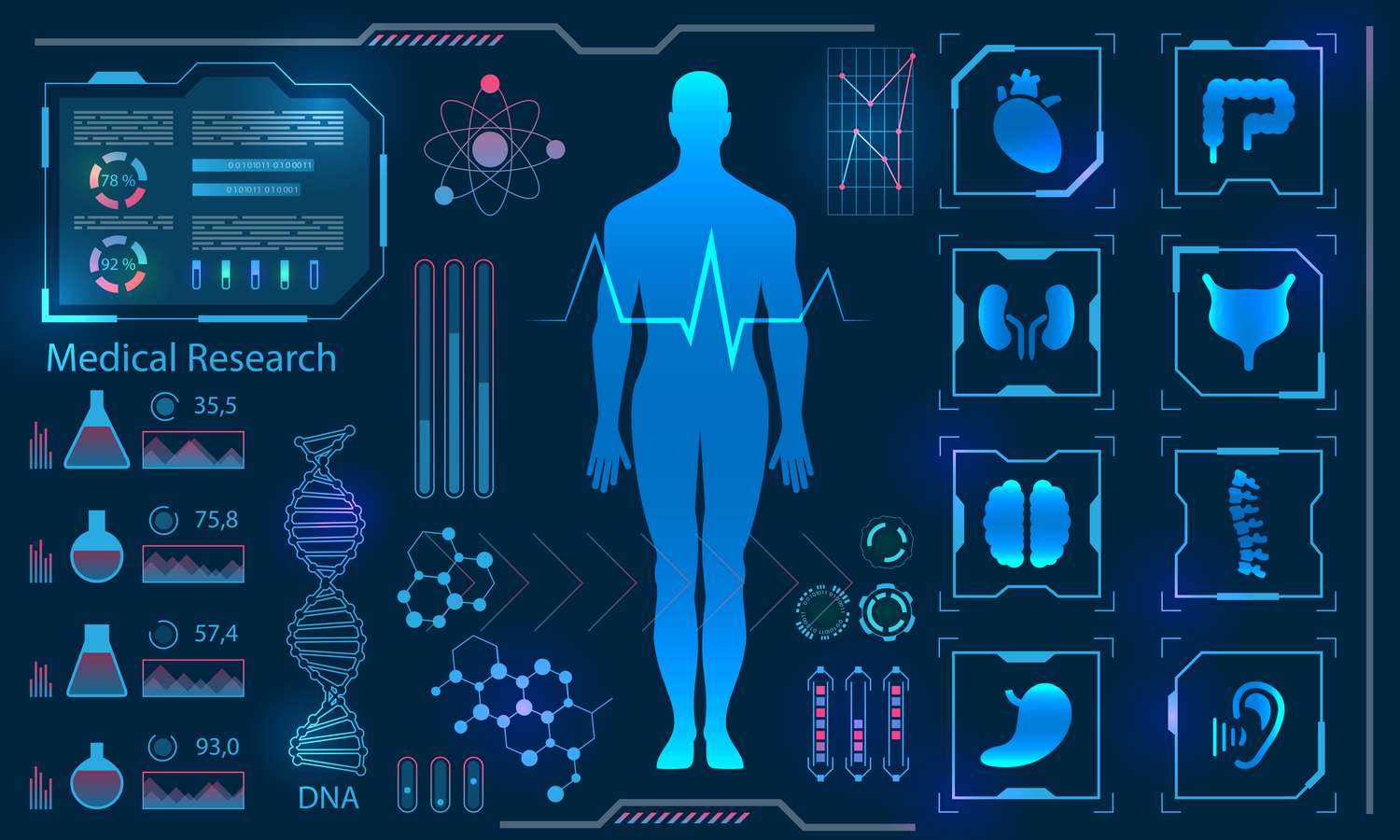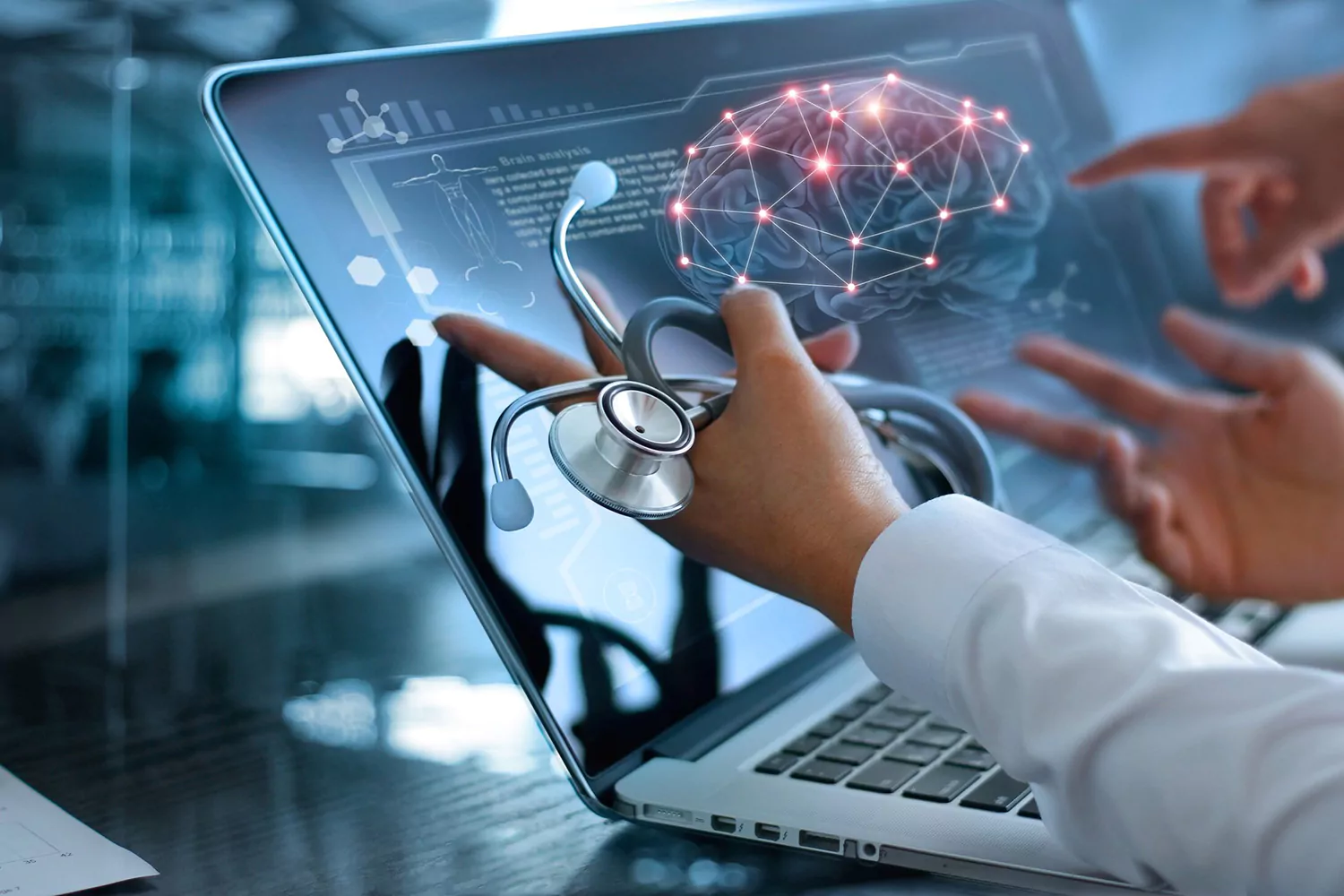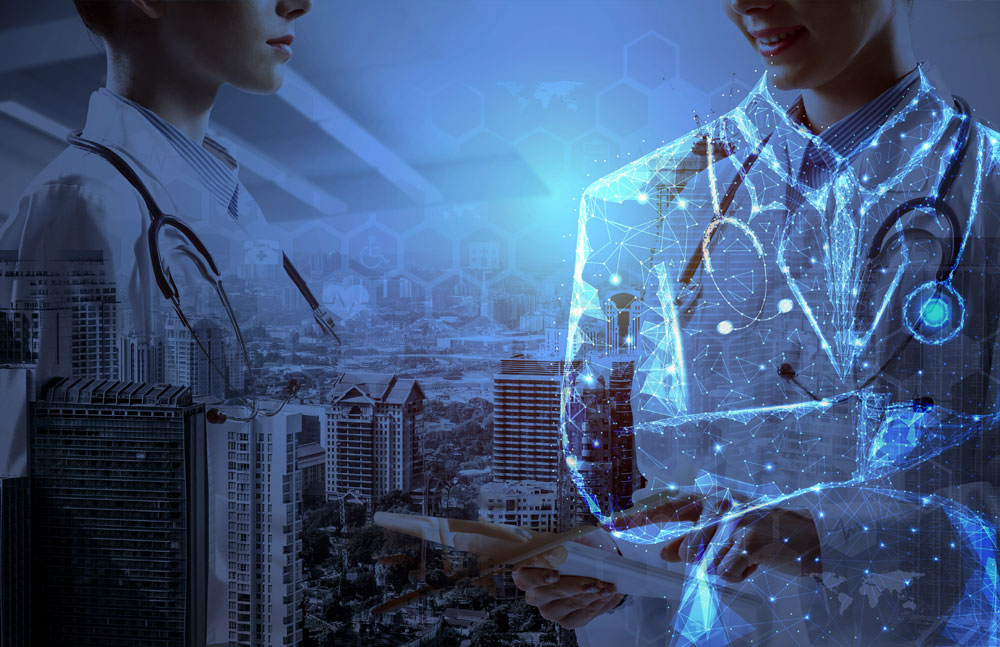The healthcare landscape is rapidly changing, with new technologies reshaping how medical personnel provide care and manage patient health. Among these trailblazing breakthroughs, Digital Twins in Healthcare stands out as a game changer. But what exactly are digital twins, and how do they integrate into the medical field?
In this essay, we’ll look at the notion of digital twins, their practical applications in healthcare, the pros and drawbacks, and what the future holds for this groundbreaking technology.
What is a Digital Twin in Healthcare?
A digital twin is a virtual model that represents a physical object or system. Digital twins offer a dynamic portrayal of their real-world counterparts by utilizing real-time data, simulations, and machine learning. This technology, which was previously employed in industries such as aerospace and manufacturing, is now gaining popularity in healthcare, with enormous potential to improve patient outcomes, increase medical research, and expedite operations.
In healthcare, a digital twin can be a precise digital clone of a patient, organ, or even the complete healthcare system. Healthcare experts can forecast how a patient’s body will react to various treatments, predict illness development, and tailor care methods by mimicking a person’s physiological processes.
The Rise of Digital Twins in Healthcare
The concept of digital twins in healthcare is relatively new, but it has already sparked interest due to its potential to transform patient care. A digital twin can mimic how a patient’s body reacts to specific treatments, procedures, or lifestyle changes by merging data from several sources, including medical history, genetic information, and real-time health monitoring data from wearable devices.
Consider a computerized facsimile of a patient’s heart that allows a cardiologist to experiment with various drugs or procedures without ever touching the patient. This predictive power not only saves time but also decreases risks, giving clinicians crucial information about the most efficient treatment strategies.
How Digital Twins Work in Healthcare
Digital twins use a variety of technologies, including the Internet of Things (IoT), artificial intelligence (AI), machine learning (ML), and data analytics. Here’s an overview of how they work in a healthcare setting:
- Data Collection: Sensors, medical equipment, and wearable technologies collect massive volumes of information from patients in real-time. This information comprises vital signs, medical history, genetic information, and lifestyle habits.
- Model Creation: Using this data, AI and ML algorithms generate a digital twin that accurately replicates the patient’s physiological processes.
- Simulation: The digital twin allows healthcare providers to simulate various treatments, predict outcomes, and assess potential risks without physically intervening with the patient.
- Feedback: Using these simulations, doctors may refine their approach, provide tailored treatment plans, and make informed decisions that improve patient results.

Applications of Digital Twins in Healthcare
The potential for digital twins in healthcare is immense. Some of the most promising applications of this technology include tailored treatment regimens and medical training.
1. Personalized medicine
One of the most important advantages of digital twins is their capacity to facilitate individualized medicine. Every patient is unique, and treatments that work for one may be ineffective for another. A digital twin enables healthcare providers to model how an individual patient would react to a given drug or therapy, allowing for genuinely personalized care regimens that are suited to each person’s unique biology.
2. Surgical Planning
Surgeries are difficult, and even the most expert surgeons may face unanticipated challenges. Digital twins serve to reduce these risks by creating a virtual environment in which surgeons may rehearse surgeries, anticipate difficulties, and fine-tune their approach. For example, before performing a heart valve replacement, a surgeon can mimic the procedure on a digital twin of the patient’s heart, ensuring that everything runs smoothly on the day of surgery.
3. Chronic Disease Management
Chronic disorders such as diabetes, heart disease, and cancer necessitate continuous monitoring and management. Digital twins enable healthcare providers to follow illness progression, predict flare-ups, and change treatment strategies in real-time. This proactive strategy allows patients to better manage their diseases and lowers the probability of hospitalizations or complications.

4. Drug Development and Clinical Trials
The process of creating new medications is costly and time-consuming. Digital twins provide a more efficient alternative by simulating how new medications will interact with the human body. Pharmaceutical companies can test new medicines on digital replicas of patients, accelerating drug discovery and reducing the need for time-consuming and expensive human trials. This may result in faster approval of novel pharmaceuticals and more effective therapies for a variety of ailments.
5. Medical Training and Education
Digital twins are also changing the way medical students and professionals are trained. Healthcare providers can practice surgeries and treatments in a virtual environment that simulates real-life events without risking the patient’s safety. This hands-on approach to learning allows medical professionals to obtain practical experience in a safe and controlled environment.
The Pros and Cons of Digital Twins in Healthcare
The use of digital twins in healthcare, like any other developing technology, has advantages and risks. Let’s look at some of the primary benefits and drawbacks of this revolutionary technology.
Pros and Cons
- Enhanced patient outcomes
- Reduced medical errors
- Personalized treatment plans
- Efficient drug development
- Improved chronic disease management
- High initial costs
- Data privacy concerns
- Technical complexity
- Limited real-world applications so far
Challenges and Ethical Considerations
Despite their great promise, digital twins in healthcare pose numerous obstacles, notably in terms of ethics and privacy. The massive amount of data required to produce a realistic digital twin necessitates careful management of patient permission and data protection. Healthcare providers must ensure that patient information is managed with strict confidentiality and that any possible breaches are promptly addressed.
Furthermore, there is the issue of accessibility. Not every healthcare facility has the means or infrastructure to use digital twins. This could exacerbate the gap between well-funded hospitals and smaller, underfunded clinics, resulting in inequities in patient treatment.

The Future of Digital Twins in Healthcare
Looking forward, the future of digital twins in healthcare is bright. As AI and machine learning grow, digital twins will improve in accuracy and ability to simulate complex medical illnesses and therapies. The growing use of wearable devices and IoT technology will offer the real-time data required to develop highly tailored digital twins for specific patients.
In the coming years, digital twins are expected to play an increasingly important role in medical research, patient treatment, and healthcare systems as a whole. Digital twins have numerous and expanding applications, ranging from enhancing hospital operations to expediting drug discovery.
Conclusion
Digital twins in healthcare are set to transform patient care, medical research, and healthcare delivery. By providing tailored treatment regimens, improving chronic illness management, and increasing surgical results, this technology has the potential to alter healthcare as we know it. While there are still obstacles to overcome, the future of digital twins looks promising, and their impact on healthcare will only rise.
